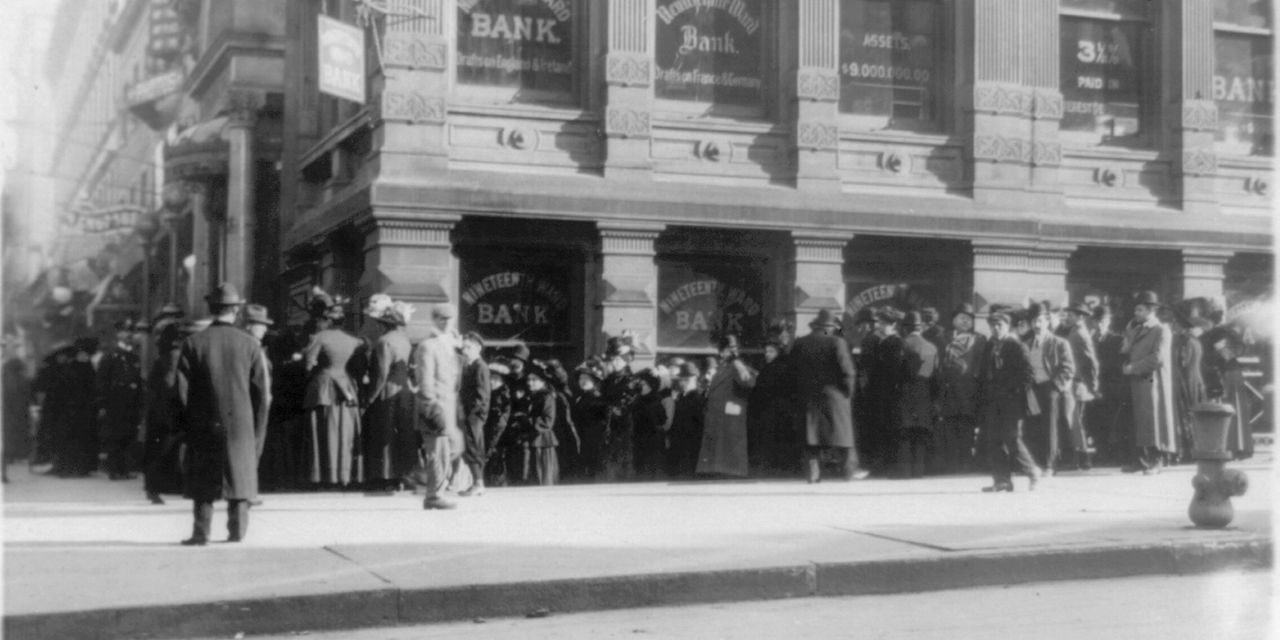When U.S. regulators find themselves with a banking emergency on their hands, they know who to call: the House of Morgan.
From the Panic of 1893 to the panic of 2023, the bank founded by John Pierpont Morgan Sr. has been solicited to lead the rescue whenever the American financial system has faced existential episodes. The takeover of
First Republic Bank
by
JPMorgan
is just the latest example.
The JPMorgan-led rescues have on the whole been good for the U.S., and very good for JPMorgan. But they haven’t come without controversy.
As historian Richard A. Naclerio wrote of J.P. Morgan Sr.’s role in the halting the Panic of 1907: “He was touted by many Americans as a true patriot and selfless beacon of financial hope for the country. But, to those who rigidly examined his actions, he was a monster who fed off the demise of economic destruction.”
Morgan first had a hand in the Panic of 1893. With U.S. gold reserves falling, Morgan persuaded President Grover Cleveland to take a $65 million loan. Morgan basically bailed out the country, though Cleveland shouldered the blame for the depression and was denied re-election in 1894.
When the Panic of 1907 began—started by an ill-advised attempt to corner the copper market—Morgan was following the news from an Episcopal Conference in Virginia. Returning north, with an entourage including two bishops, Morgan sent word for the other leading Wall Street bankers to meet him on the morning of Oct. 20 at his Manhattan brownstone.
“He basically locked them all in and wouldn’t open the doors until they reached a deal,” said Odeon Capital analyst Dick Bove.
“J. Pierpont Morgan Assumes Control of New York Finances,” blared the headline in the Birmingham, Ala., News, on Oct. 23. “Situation Shows Marked Improvement.”
Morgan’s banking syndicate bailed out several struggling banks and is credited with shoring up the nation’s banking system in general.
Morgan also looked after his own interests.
“The takeovers immediately began,” the historian Naclerio wrote. “J.P. Morgan swooped in and absorbed the Mercantile Trust, and six more companies and banks, including the two largest banks that were hit hardest.”
Congress launched an investigation into Morgan’s “money trust.” The report of the so-called Pujo Committee found “that no less than 18 different major financial corporations were under the complete control,” of the banking consortium, wrote Naclerio.
No bankers were ever charged. But the panic and its aftermath resulted, in 1913, in the creation of the Federal Reserve System to act as America’s lender of resort. Morgan, the previous lender of last resort, died on March 31, 1913.
The Stock Market Crash of 1929 gave Morgan’s son, J.P. “Jack” Morgan Jr., his chance to save the financial system. It didn’t go as well.
Morgan followed his father’s playbook and arranged a meeting of the heads of Wall Street as the market plummeted on Oct. 24, Black Thursday.
The decline “was checked after several of the country’s most influential bankers had met at the offices of J.P. Morgan & Co.,” Barron’s wrote in its Oct. 28 issue. “On Friday the formation of a market pool with buying power of $100,000,000 was announced.”
This sum proved to be a drop in the bucket. Oct. 28 would go down in history as Black Monday, to be followed by Black Tuesday. The crash was unstoppable.
Morgan Jr. had another chance to step up, in December 1930, after a run on the Bank of United States, a modest lender (despite its name) that served New York City immigrant communities.
When asked to help by New York banking regulators, Morgan refused.
“People who were in the room reported that it was his anti-immigrant bias that led him to say, ‘I am not helping these people,’” said the economist Abby Joseph Cohen. As a result, the bank failed and started a general run on lenders nationwide that brought on the Great Depression.
The 2007 Financial Crisis saw JPMorgan CEO Jamie Dimon take the lead with the high-profile acquisitions of Bear Stearns and
Washington Mutual.
These made it the No. 1 bank in the U.S.
Dimon’s moves had their critics, as he acknowledged in a letter to bank employees in 2018.
“Counter to what most people think, many of the extreme actions we took were not done to make a profit; they were done to support our country and the financial system,” Dimon wrote.
And this time around, Dimon made a similar point. “Our government invited us and others to step up, and we did,” the CEO said in a statement. “Our financial strength, capabilities and business model allowed us to develop a bid to execute the transaction in a way to minimize costs to the Deposit Insurance Fund.”
Another opportunity provided by the House of Morgan.
This article, originally published on March 18, was updated on May 1 with the latest news on First Republic bank.
Write to [email protected]
Read the full article here











